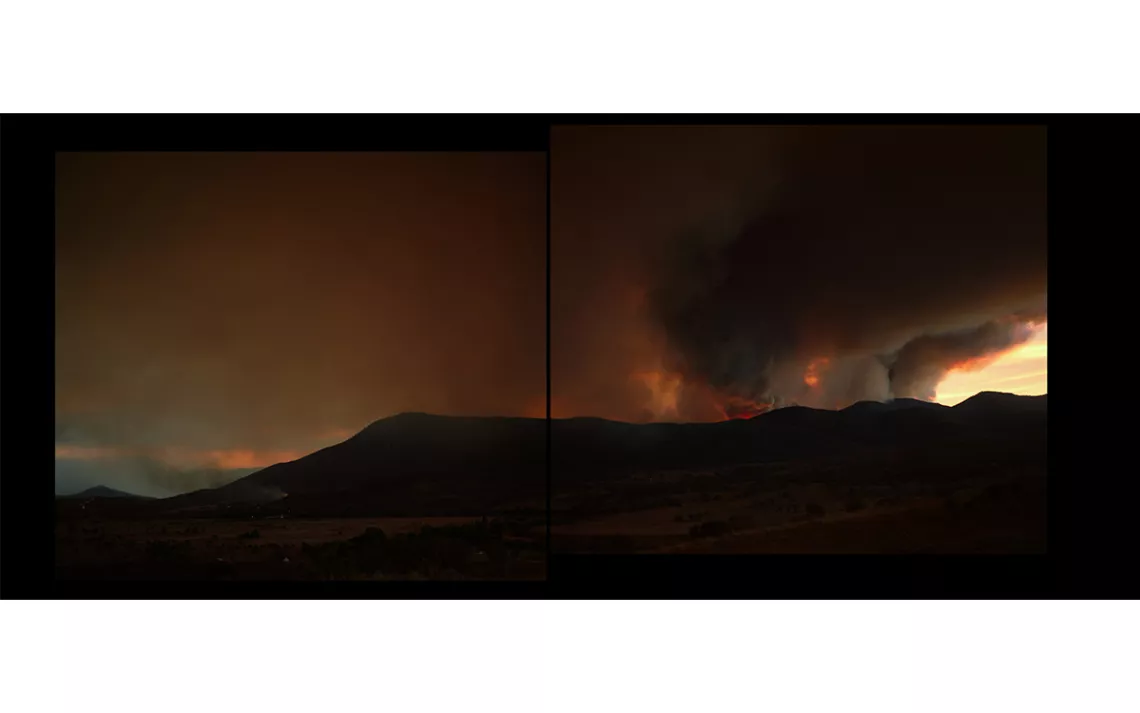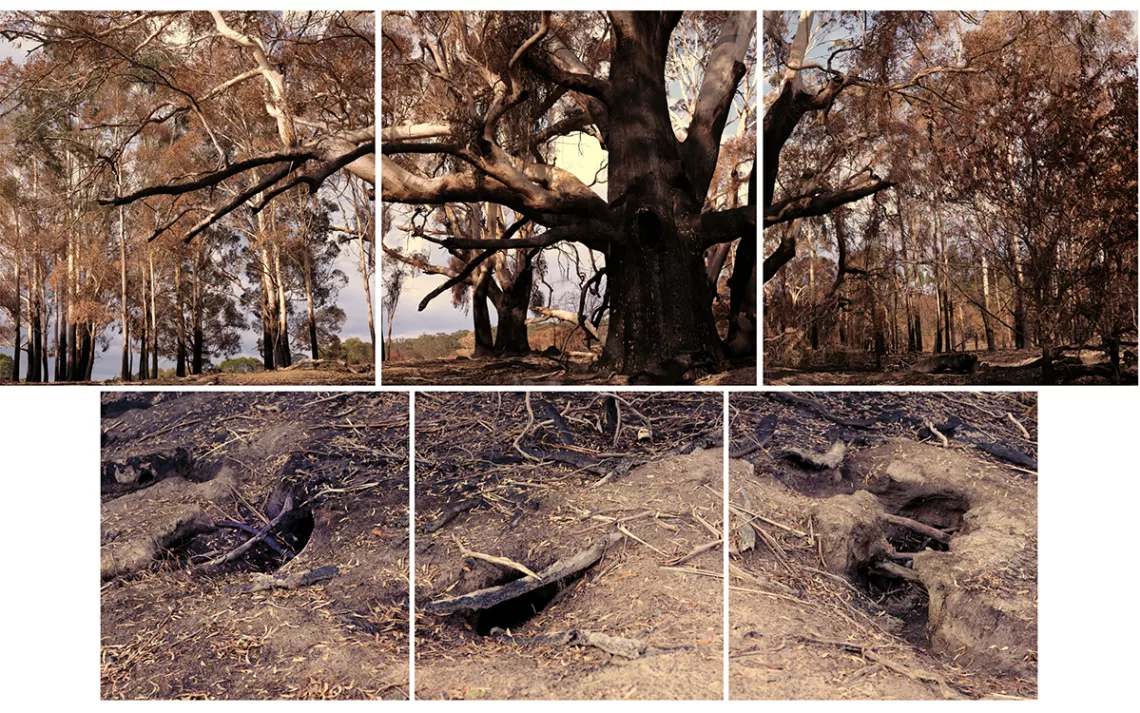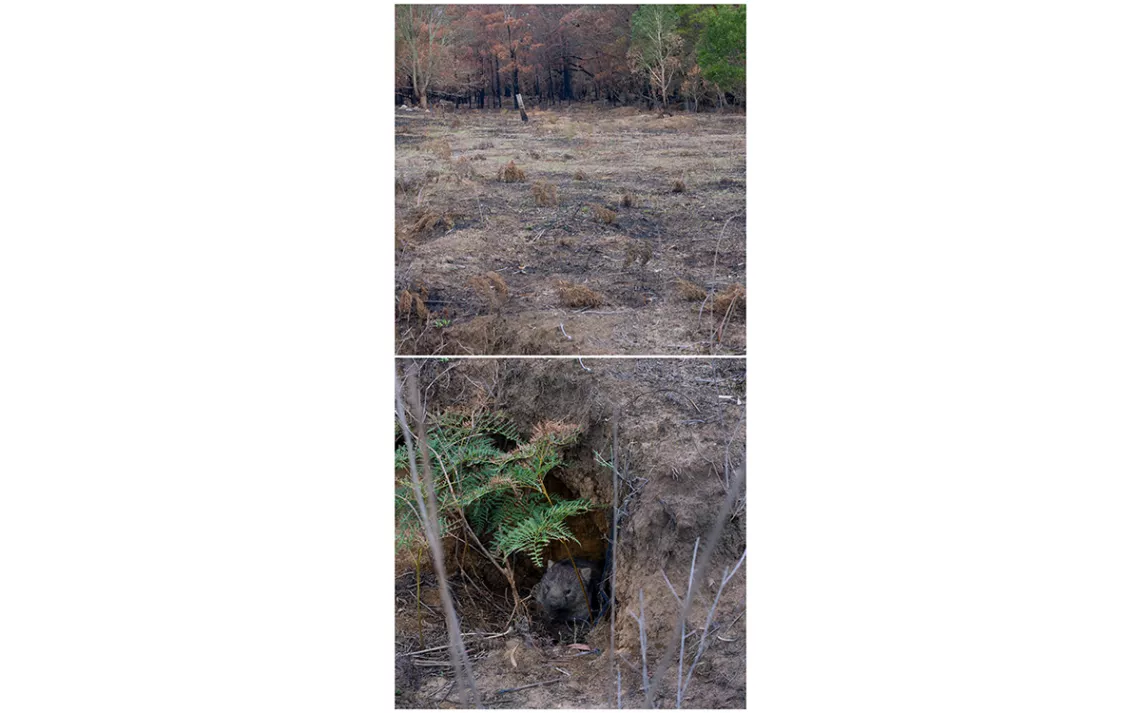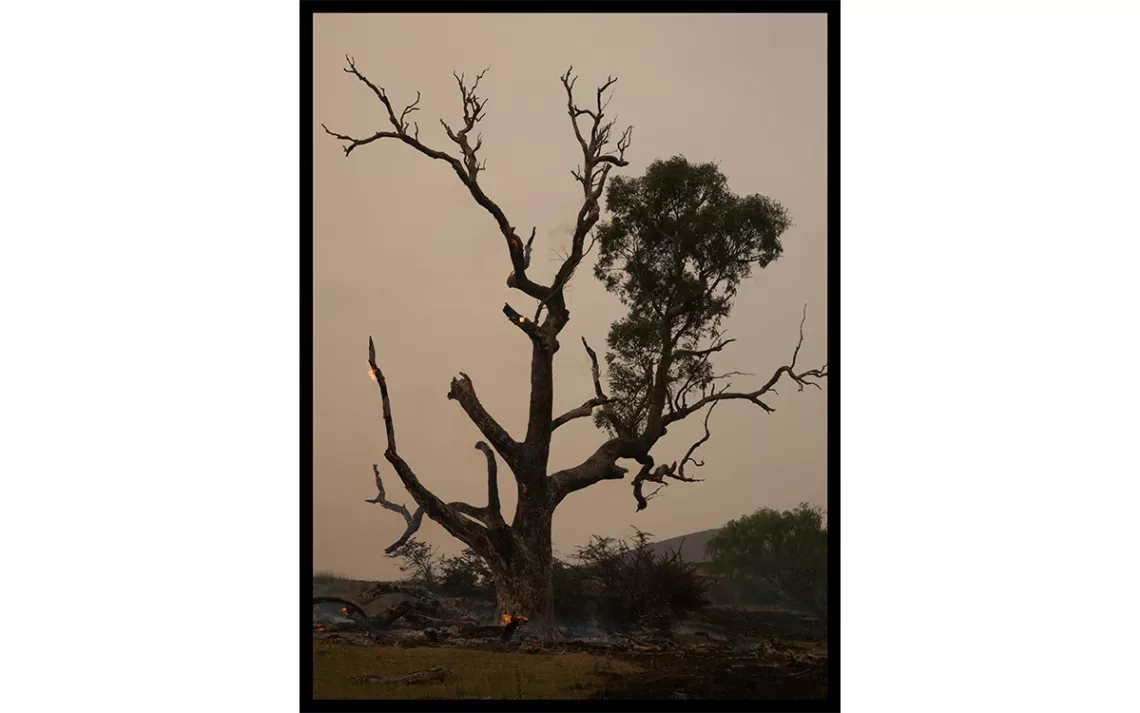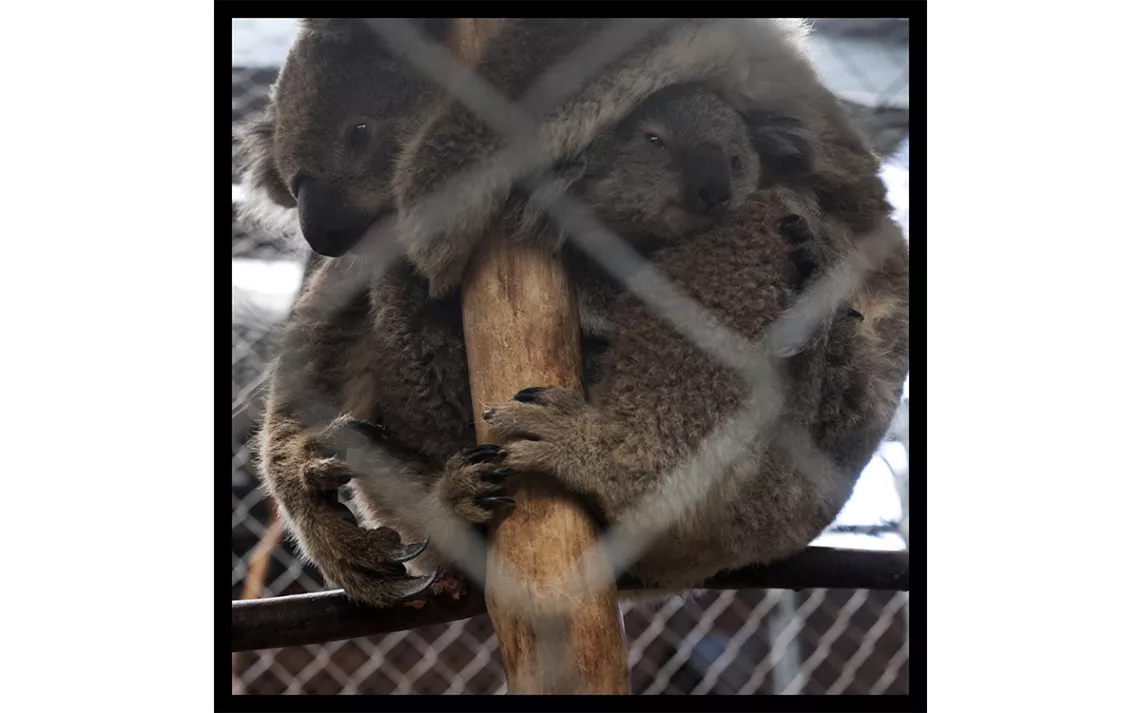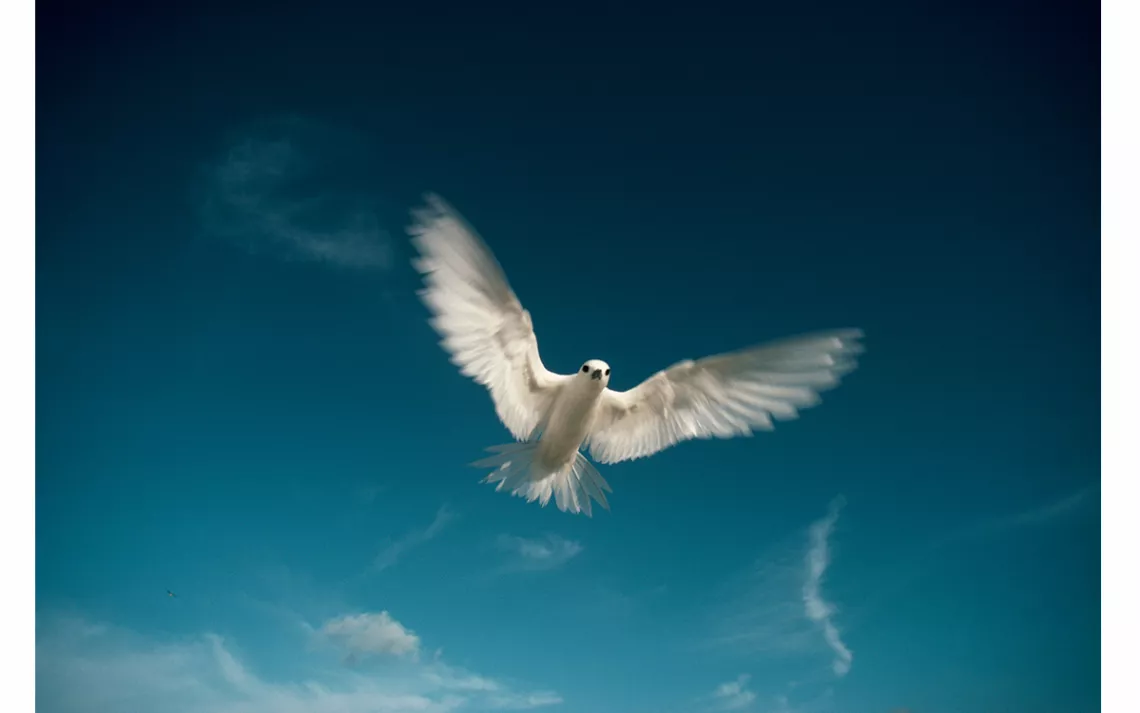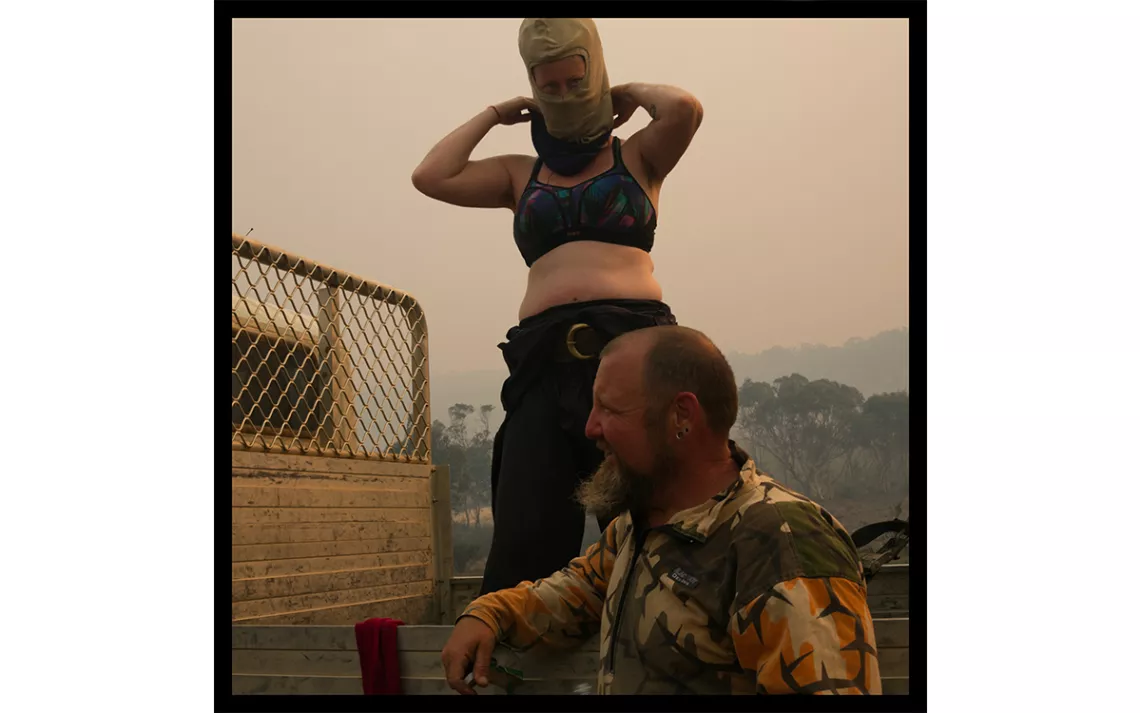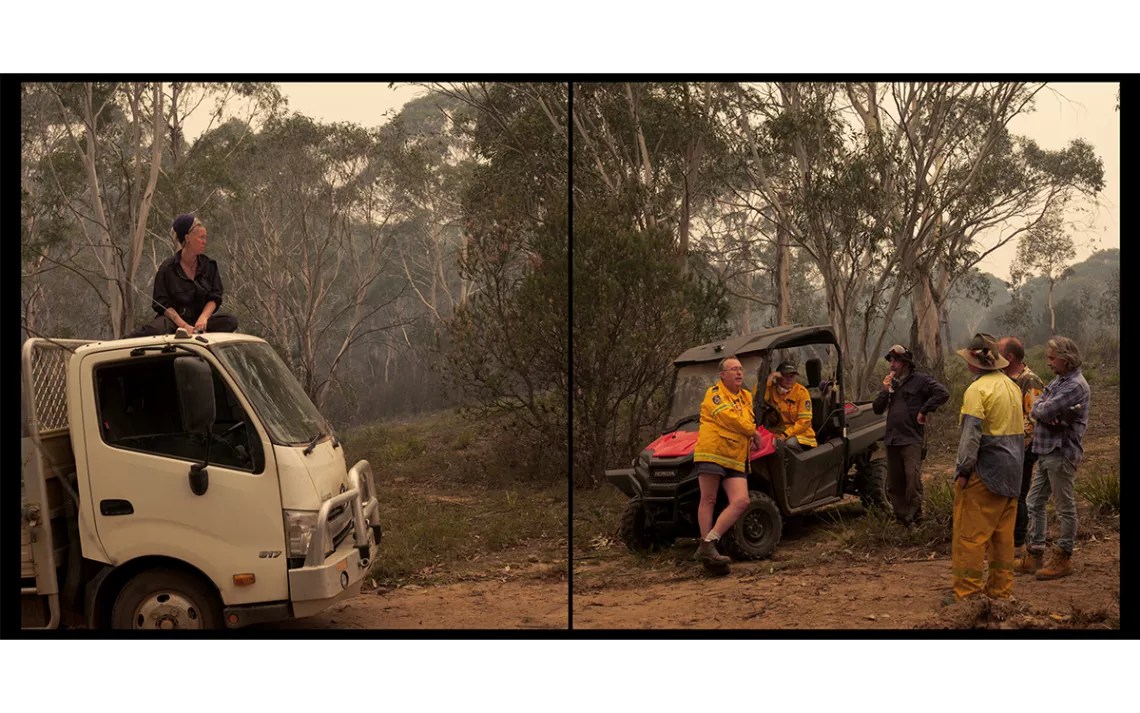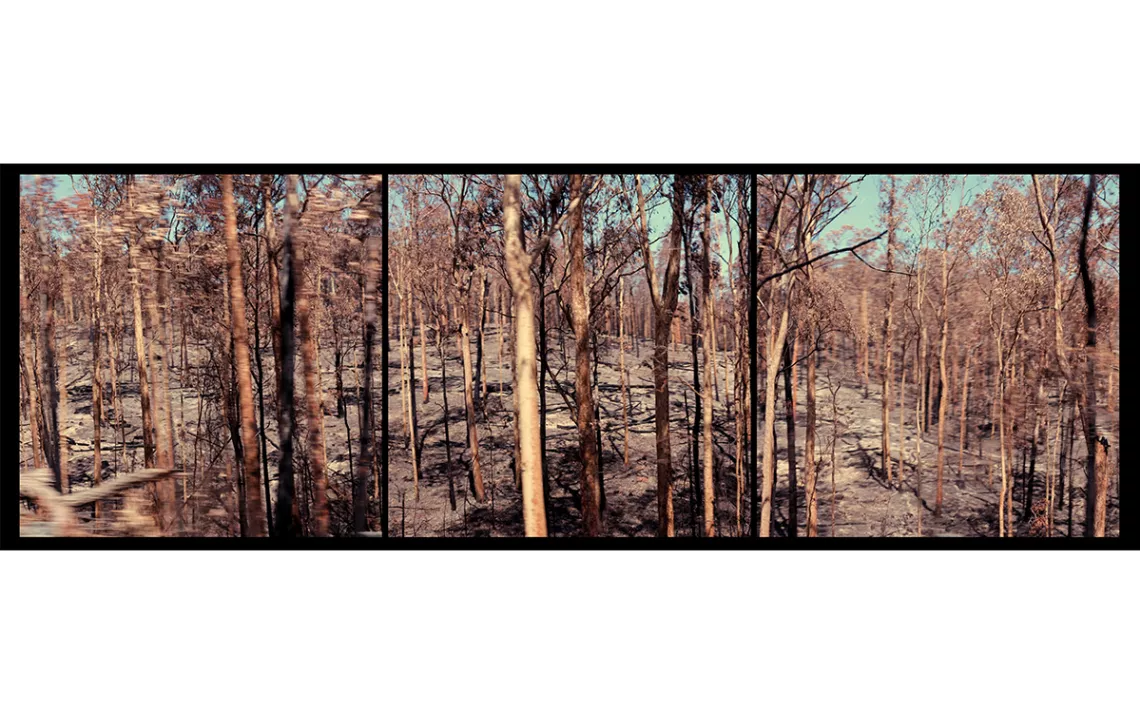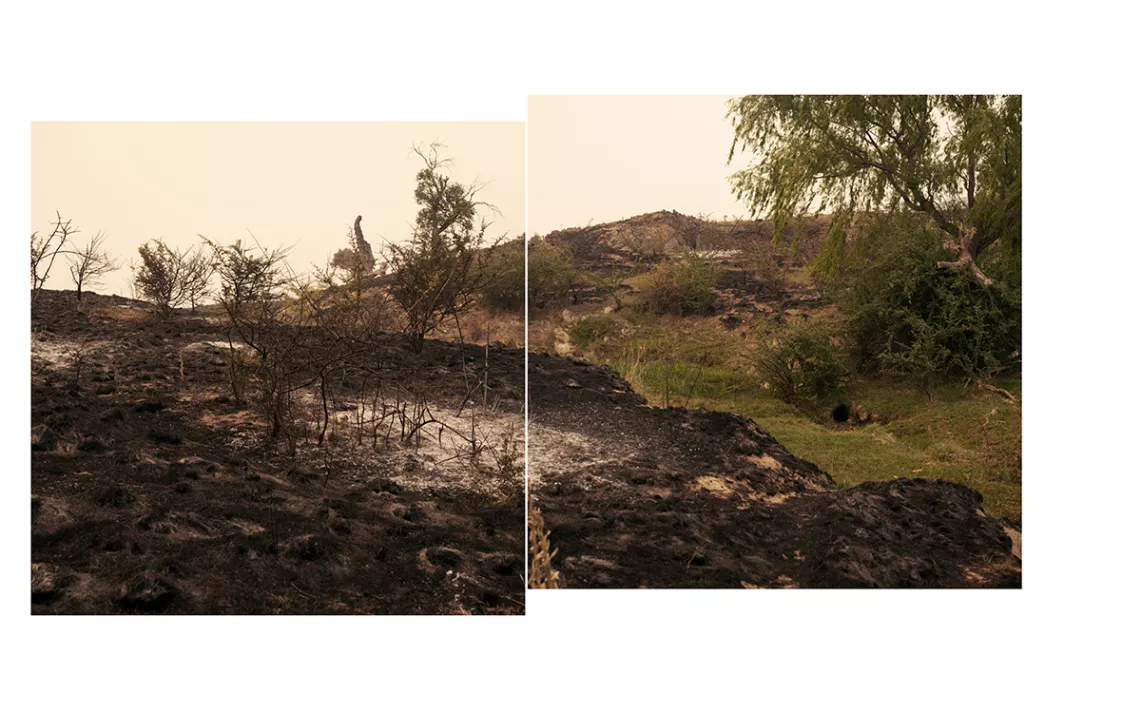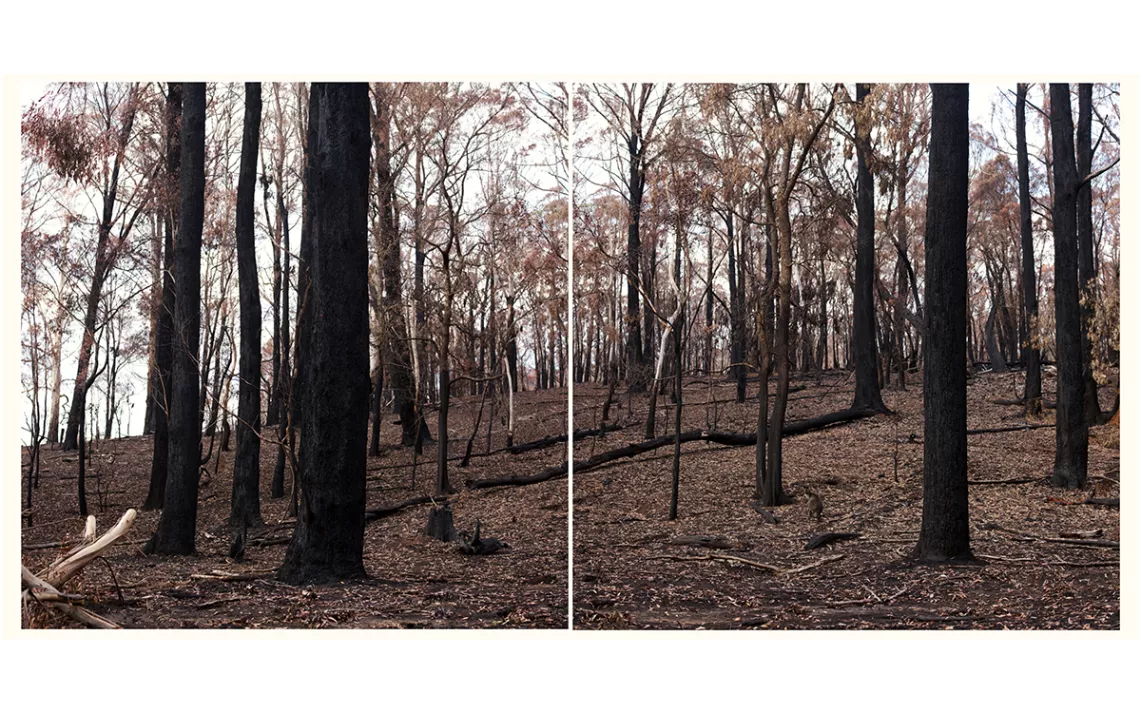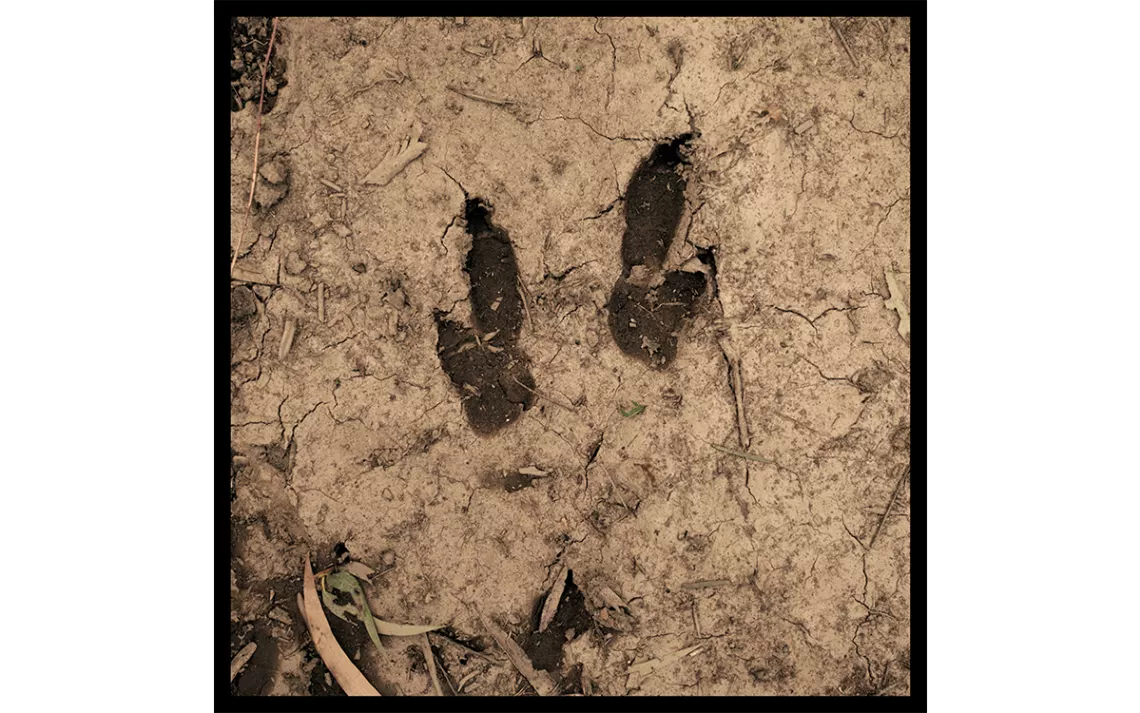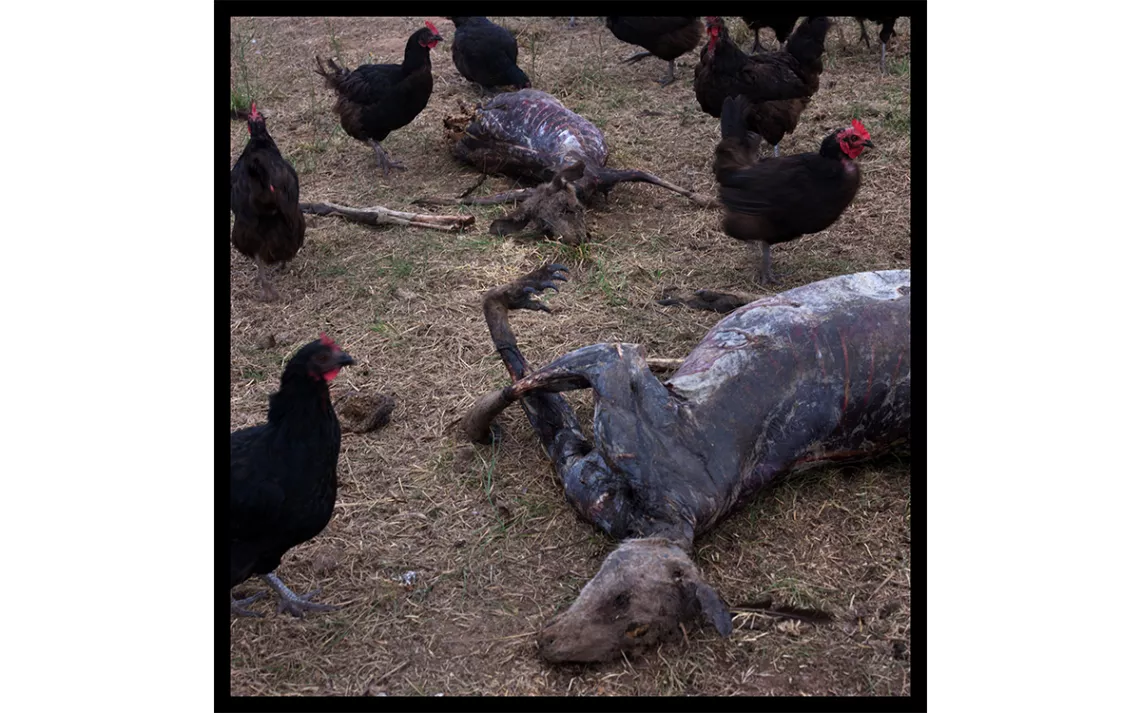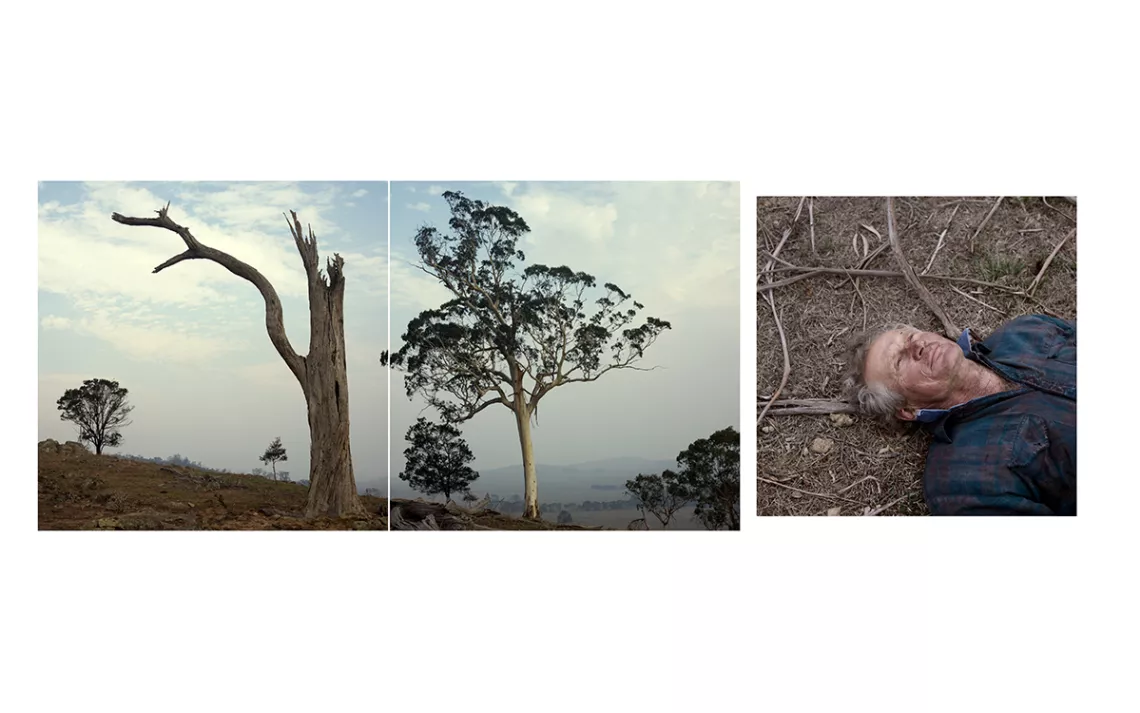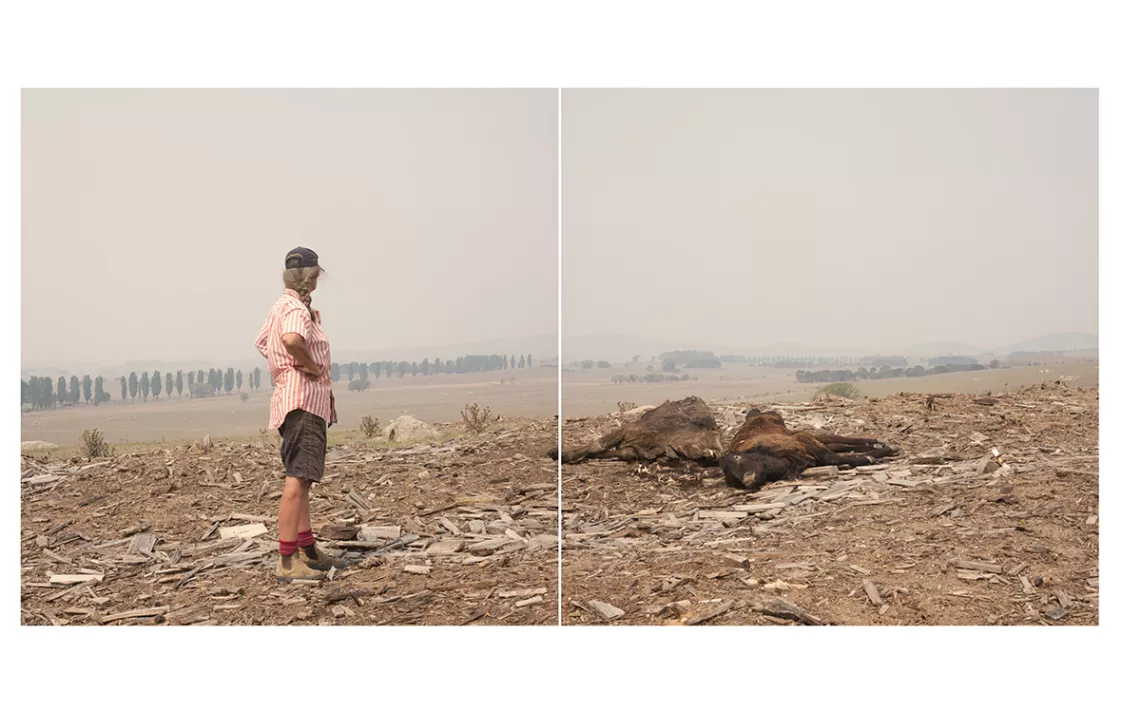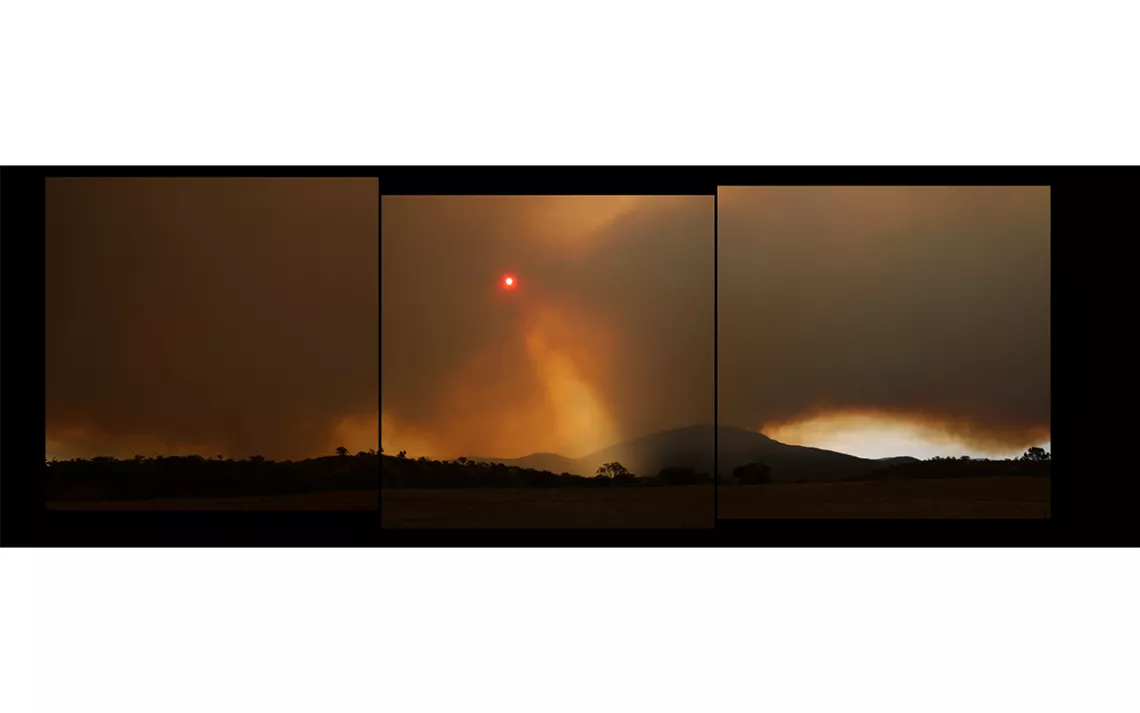The Australian Wildfires: A Climate Catastrophe in Real Time
Photographer Philip Blenkinsop traveled to Canberra to document the crisis
Photos by Philip Blenkinsop
Australia is in the grip of a three-year drought, towns are running out of water, rivers are drying up, and monster fires—having already taken the lives of an estimated 1 billion animals this fire season—are destroying wildlife and habitats. I came to Canberra to bear witness to a climate catastrophe happening in real-time.
Apocalyptic is not too far-fetched an adjective.
After landing in Canberra, I head east with my friend, artist and poet Judith Nangala Crispin, in her 4WD. Kings Highway, flanked by scorched landscapes, delivers us straight into dirty black rain clouds that burst with lightning strikes. A T-shirt on a protester at Parliament house on Invasion Day (Australia Day) sums things up: “Australia, Drive It Like You Stole It.”
Locals speak of the self-sustaining fires and the lightning coming from the pyrocumulonimbus clouds—which make the very weather that propels the fire—with a fear and a respect that for the uninitiated can seem exaggerated. The tone of their voices is low and calm. There is something about their demeanor that one recognizes in people who have narrowly escaped death in extreme and freakish circumstances, and their words do nothing to allay this feeling.
"It's like an atomic bomb went through. Plants and animals here have been vaporized.”
“The fireball was 50 meters wide and just jumped across 500 meters of open ground.”
“A fire tornado lifted the back of the (eight ton) truck, fully inverted it, and landed it on its roof, trapping three crew, and unfortunately, one of them fatally.”
“Firefighters spoke of seeing koalas falling from trees like fireballs.”
After driving south to try to reach a fire-affected area, I am turned away at a roadblock on the outskirts of Araluen. "Firies" (the affectionate Australian colloquialism for firefighters) are battling two fronts to prevent them joining and becoming “unmanageable.” Doubling back, I try to cut through an area of burnt forest and blackened earth. The sun’s rays, diffused and tinted a dirty salmon pink by the airborne particulate matter, bathe all of it and everything in an end-of-the-world light.
A calm voice on the car radio interrupts my thoughts. “You are in danger and need to act immediately to survive. The safest option is to take shelter indoors immediately. It is too late to leave.” I would hear these words several times during my brief stay, and never once was their effect on me not chilling.
I stop to photograph a woeful black and tan landscape, pulling up where the threat of falling gumtree limbs is negligible. Movement between fire-blackened trunks catches my eye. A black-faced wallaby stares back at me, confused and scared, lost like some orphan of the blitz.
Moments later, I pull over again to jump a fence in pursuit of a hare. He disappears into the ground and I go to investigate the area. Approaching quietly, I come to several large burrows, leading down under the scorched ground, and there I find a wombat staring back at me intently. She doesn’t seem to be at all bothered by my presence—small wonder after all that she has been through.
Judith and I have just returned from Oaks Estate, an area southeast of the airport, where for a while it looked as if the Beard Fire would break through fire lines and threaten suburbs. There are so many different fires burning at the same time that it is hard to keep track of them all; as they consume area after area, they are often renamed after whatever they happen to be burning at the time.
All of Judith’s collected artworks are packed into her partner’s car (not for the first time) in case the fire jumps the road into the pine plantation, roars up the hill, and we are forced to evacuate her house. She and her family have been living with these unpredictable dangers for over two months. She constantly monitors the short-wave and radio bulletins, responding to the needs of locals who might call on her and her “Mosquito” (a Toyota 4WD with 1,000 liters of water and a fire-fighting pump mounted on the flat-bed) at short notice.
With the volunteer RFS (Rural Fire Services) stretched thin and often called away from properties in order to remain on call for Canberra proper (something that has riled many firies who see this action as turning their backs on those in real need), spot-fires threaten to grow into life-threatening blazes and the Mosquito crews are often the last hope and salvation for many.
On the evening of January 28, I find myself waiting for nightfall at a vantage point on a ridge above the Murrumbidgee River to photograph the latest threat to Canberra suburbs.
The Orroral Fire (started by an Australian army helicopter tail light if we are to believe the government press release) is burning out of control in Namadgi National Park, causing a state of emergency.
As I train my camera on the glowing hills in front of me, I can see the RFS combatting spot fires as they flare, down in the valley near Tharwa, southeast of where I am standing. Eventually, a solid plume of smoke rises, and with a change of the wind, it fast begins to fill the valley, killing my visibility as it expands toward my position. I walk back to the car in the darkness, calmly, smoke in my throat, aware that this is not the time to break an ankle.
Approaching the road that separates fields and bush from housing, I move past a group of people staring out into the smoke and slide into the parked car where Judith is seated, waiting and working her phone. “Hide your cameras Philip, quickly.”
Government bulletins have been labeling everyone and anyone with a camera as a disaster tourist, and groups of vigilantes have interpreted this as carte blanche to take the law into their own hands (an interpretation that has not been condemned by authorities as it should have been); indeed moments before I arrived, police had intervened to save a man beating away the hands of just one group.
*
At the time of this writing, one month later, the Orroral Fire is officially out after burning through 800 square kilometers of Namadgi National Park—the equivalent of over a quarter of Yosemite National Park. Temperatures have soared again in NSW, reaching over 40 degrees Celsius, and a total fire ban is in place across much of the state.
I am reminded of a friend’s take on the fact that 2019 was the hottest and driest year ever recorded in Australia. Another way of looking at that, he said, is that 2019 will be the coolest, wettest year on record for the next 250 years.
 The Magazine of The Sierra Club
The Magazine of The Sierra Club
